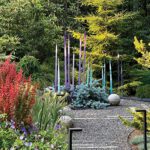Got shade?
July 29, 2022
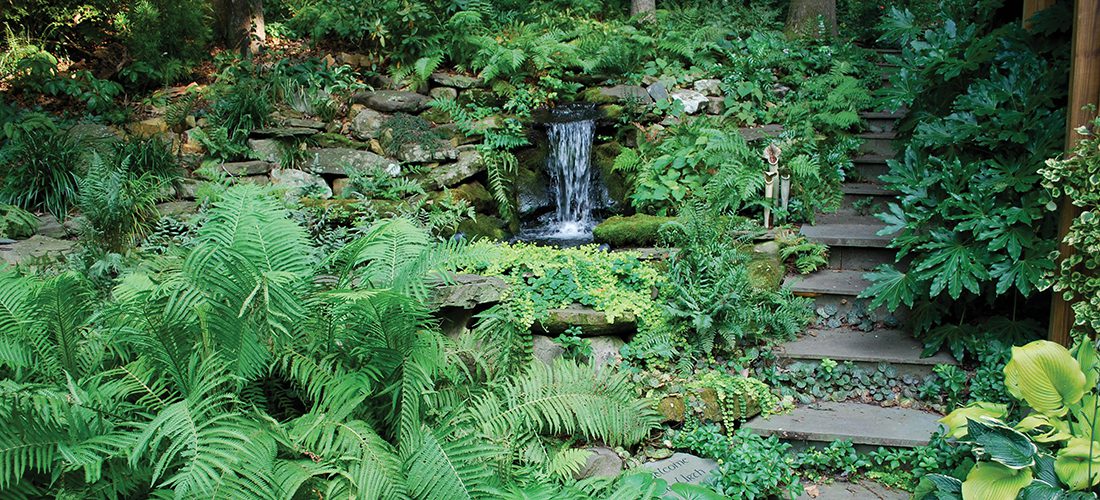
Let’s build a garden.
by Jay Sifford
Experienced gardeners know that a garden can be built just about anywhere. They also know that each site brings with it a unique set of gifts and challenges. While sunny spaces can become the canvas for abundant and exuberant color, they also may require frequent watering and maintenance and can look frayed and tired when Charlotte’s midsummer heat sets in. A shade garden, however, can offer a tranquil respite from that seemingly unending onslaught of summer heat and humidity. In fact, a properly designed shade garden may require less maintenance and exude a sense of magical immersion that a sunny garden simply cannot.
Many homeowners, be they new or experienced gardeners, throw up their hands in despair when trying to create a garden in the shade. What can be done about large amounts of tree roots, rocky or thin soil, perennially wet spots and, worst of all, that dreaded dry shade? Why did the inherited rose planted beneath the large oak die? I’m here to help.
The first step in creating a shade garden is to take stock of the conditions your space presents. Is the space part shade or full shade? Gardens with part shade can still experience several hours of intense sunlight at certain times of the day, with hot afternoon sun being the most difficult, so determining what time of day your space receives that sun will help inform your plant palette.
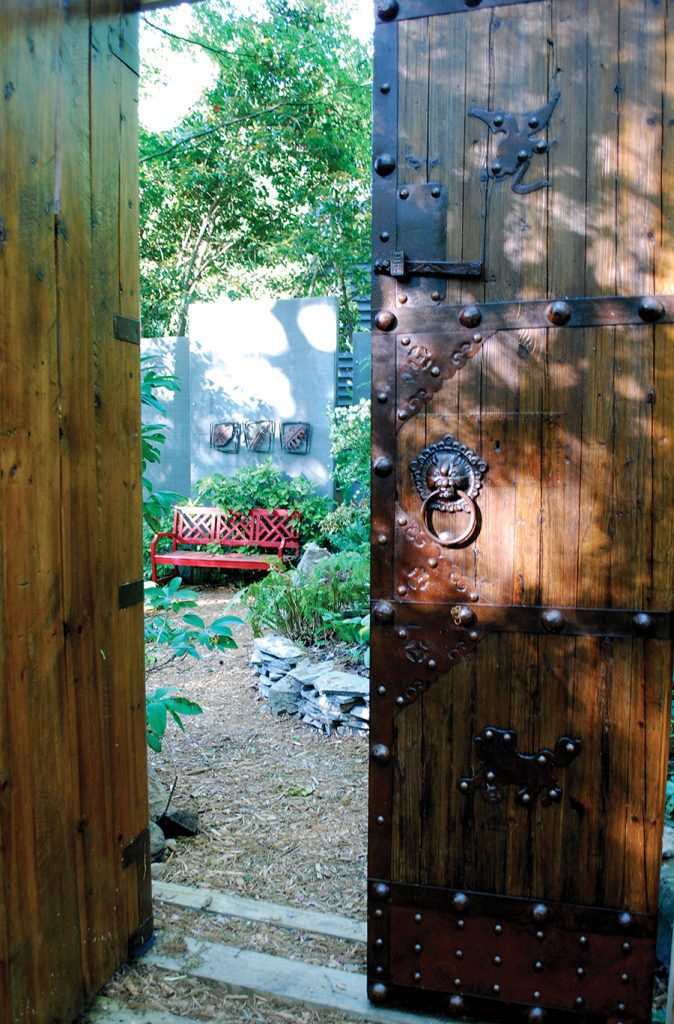

If your space boasts full shade, is it light shade with a high tree canopy and occasional filtered sunlight, medium shade or dark dense shade? Next, study your soil. Is it rich, loamy soil that has been the recipient of years of falling and decaying leaves, is it mainly clay, or perhaps a combination of both? Charlotte red clay is not necessarily a bad thing, as many people believe. It is actually rich in minerals and can hold beneficial moisture. It may need to be amended with compost to allow it to drain more efficiently, or plants can be installed that enjoy that type of soil.
Is the soil wet, moist or dry? Tree roots can rob the soil of beneficial moisture before your choice plants have a chance to absorb and use that water. In this case, choosing your plant palette wisely or supplying additional water will be necessary.
Lastly, what is growing there now? Typically, a forest will have large trees forming a canopy, understory trees forming a second layer, shrubs layered underneath, then low perennials and ground covers. Will you need to limb up the large trees to open the space, remove some understory trees to ensure the health of the remaining trees and allow easy access to the space, or remove invasive ground covers like honeysuckle, English ivy or poison ivy?
Once those factors are determined and either remedied or accepted, the fun and creativity can begin. Just like a house has an entry foyer, hallways and designated living areas, a garden should have a clear and personalized point or points of entry and pathways that lead to a destination. In this way, a garden and the journey through it become metaphors for life. Your garden can become a vehicle for self-discovery. Do you prefer a meandering curved pathway, or something straight that is the fastest way to move from Point A to Point B? Are you more comfortable at the top of a hill looking down on your creation, or near the bottom, feeling safe and nurtured, nestled into a valley or space carved into the hillside? Paths may be lined with mulch to simulate a hike through a virgin forest, built with gravel for easy navigation and maintenance, or stone. The destination could be a simple bench or hammock, or a seating area for multiple people. I generally prefer a circular seating area as it feels more natural and makes better use of the space. It also has a better feel to it, rather tribal in nature. Think of your childhood when you sat around in a circle and told ghost stories on hot summer nights.
In siting plants, taking clues from nature is the best route. If you have light shade with moist to average soil, consider building an understory of trees such as dogwoods, redbuds, Japanese maples or Styrax (aka Japanese snowbell). You may also use larger shrubs such as buckeyes and Camellia japonicas. If you have dense shade, you will want to forego any additional understory in order to maximize available light.
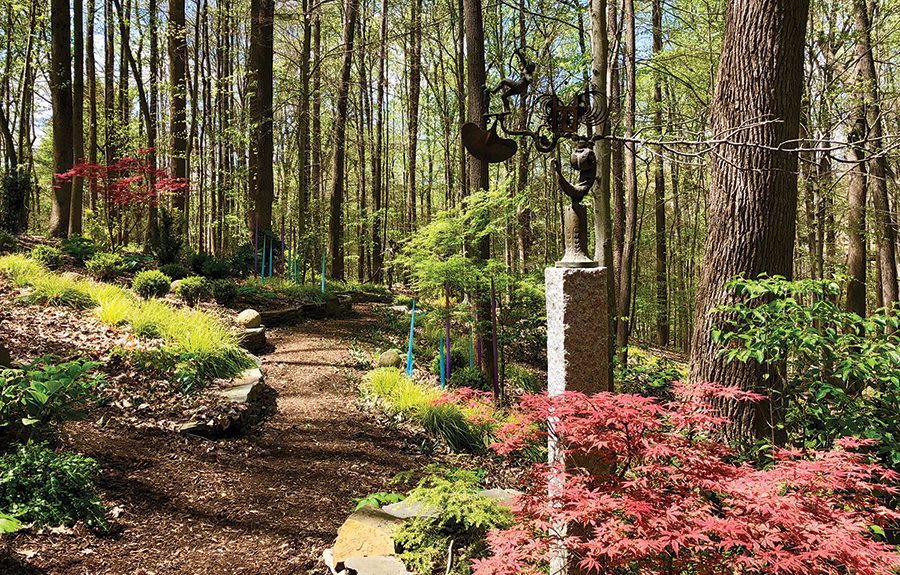
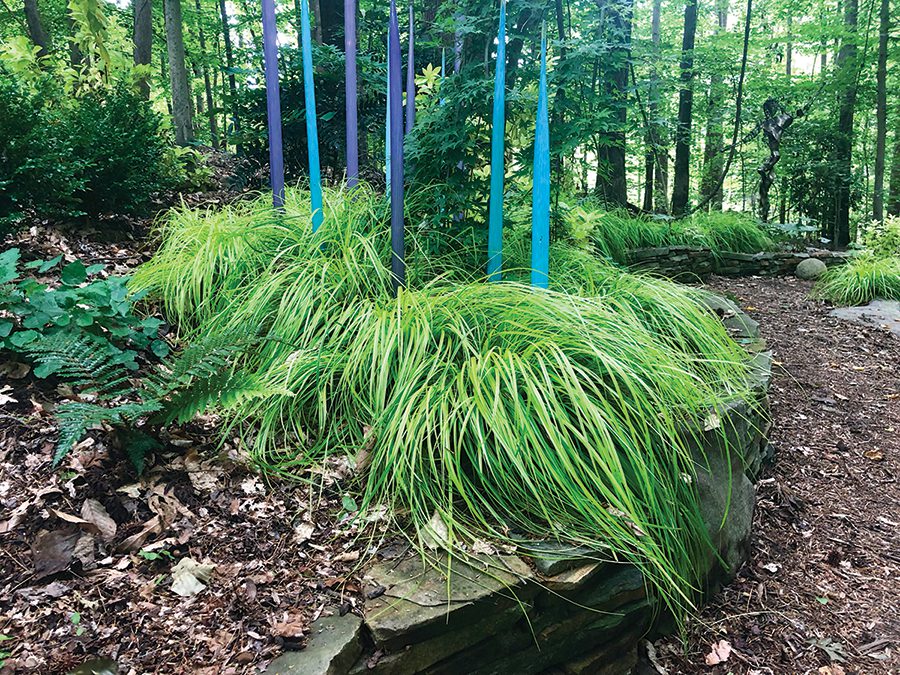
Your creativity can really shine at ground level. Since most shade-loving plants sport no or fewer flowers than their sun-loving counterparts, foliage color and texture will become your friends, with pops of seasonal flower color from shrubs such as azaleas, camellias, calycanthus, hydrangeas, mahonias and rhododendron.
If your site offers light to medium shade and average to moist soil, consider adding the illusion of sunlight by incorporating plants with chartreuse foliage. The grass-like ‘Everillo’ carex and the shrubby ‘Florida Sunshine’ Illicium are prime candidates to create this illusion. Consider installing your lower plants in masses rather than in ones or twos. Doing so will give you a more peaceful and cohesive look and will, in many cases, mimic the way those plants grow in nature.
Ferns may become your new best friends: There’s a fern for nearly every shade to part shade situation. For lighter shade and moist to average soil, consider these ferns: autumn, Korean rock, lady, ghost, painted, tassel, Dyce’s, Dixie wood, log and shield. For wet soil, consider these: ostrich, sensitive, cinnamon and royal. For dryer shade, plant the native Christmas fern, holly or the hairy lip fern.
Other ground-level plants to consider include hostas, Indian pinks (Spigelia), wood asters, woodland phlox, ginger (Asarum), foam flower (Tiarella), astilbes and trilliums, all for average to moist soil. For dryer soil, consider native pachysandra, sweet box (Sarcococca), Lenten roses (hellebores), iris cristata, and cast-iron plant (Aspidistra). A good local nursery can provide some additional choices. Note that with some of these plants, particularly hostas and tiarellas, you may need a good deer spray. I use a peppermint oil-based spray that doesn’t wash off when it rains, such as Deer Out.
The final step in creating your dream shade garden is to add some jewelry or good quality garden art. Choices are individualistic and varied. Choose something that creates a sublime statement without being overwhelming. Site the pieces in hidden niches and around turns to add an element of surprise, or centered on axis at the end of a pathway to draw visitors into the space. The key here is to have fun and be yourself. The effort you put into creating your own shade garden will be repaid with years of tranquility and enjoyment. SP
Featured Photo: Ferns are an adaptable and indispensable part of the shade garden. These moisture-loving ostrich ferns are at home at the edge of a pond. Photographs provided by Jay Sifford. Sifford is a Charlotte-based landscape designer who specializes in contemporary, Asian and transitional gardens. His work has been featured in Southern Living, Country Gardens and Fine Gardening, as well as Houzz and several books. siffordgardendesign.com
